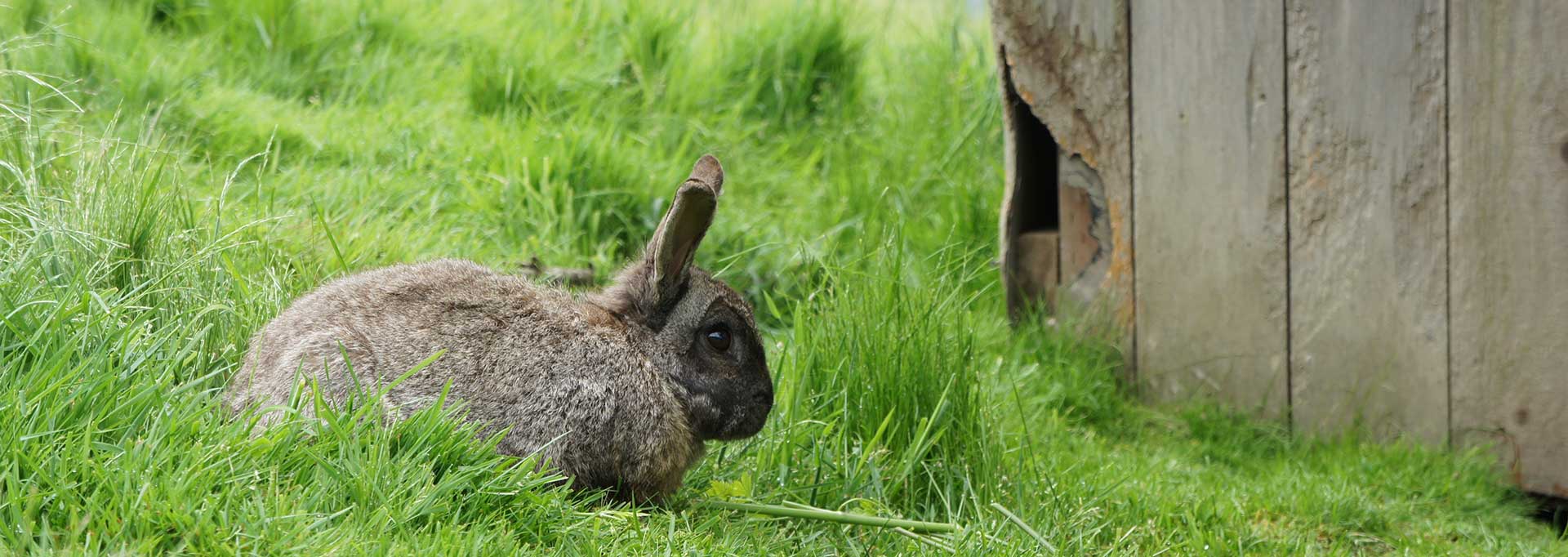
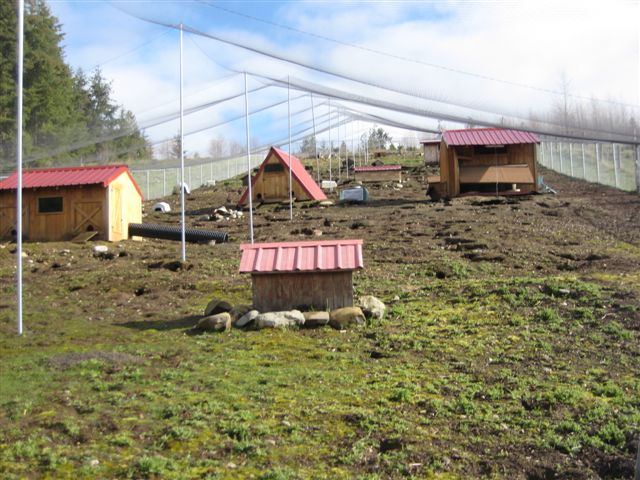
For years, domestic rabbits, especially "Easter Bunnies" have been discarded at Seattle's Lower Woodland Park and several other parks by irresponsible, uncaring pet owners. While some of these rabbits have reproduced and increased their numbers, it comes with many casualties. Dropping off a terrified rabbit with non-native colors and a loss of instinctual defenses against predators which has become totally dependent on humans in a strange environment ensures that most will not survive. Sadly, all the park rabbits still face disease, viral infections, lack of a proper food supply, and critical injuries.
Most of the public is unaware that, while domestic rabbits are physically similar in many respects to our native species, there are many differences that are basic to their survival. America's wild rabbits, of which the cottontail is the most well-known, live alone in rocky outcroppings and desert terrain and some dig shallow holes. On the other hand, our pet rabbits are a European species that live in social groups and dig deep, wide, complex homes. This genetic characteristic is the primary trait which has made them unwelcome guests in our city parks and precipitated the decision by the Seattle Parks Department to remove them.
The Seattle Parks Department understood that a humane course of action had to be undertaken after the public outcry over "gassing" nuisance Canadian gees. They formed a coalition with animal organizations which included the Seattle Animal Shelter, PAWS, and the Pacific Northwest Rabbit Society and an attempt began in early 2006 to trap the rabbits. While numbers of rabbits were removed and sent to a sanctuary, the effort proved unsuccessful as a sufficient number remained to breed.
In the spring of 2006, Mark Pilger and Carrie Brittingham formed Friends of Park Rabbits, and they and their volunteers began an all-out effort to trap every single rabbit. The trapping ended successfully in January, 2007, with the capture of over 100 rabbits. The Seattle Parks Department provided a vacant chapel with a large main floor to house them in Discovery Park. Here they received extensive veterinary care and all were spayed or neutered. A search was immediately undertaken to find a permanent home. Many sanctuaries were contacted, but none wanted them.
Seven months later, with no prospects, Precious Life Animal Sanctuary (PLAS) was contacted and agreed to house them in a temporary enclosure while a permanent enclosure was built on the property. A one-of-a-kind, bunny-proof enclosure on over half an acre donated by PLAS which is totally netted above has been created. Extensive bulldozer and backhoe work was required to clear and erect the perimeter cyclone fencing and bury it deep in concrete. A wide array of individual houses with two floors have been built by volunteers and group housing in a partitioned bunny barn, bunny chalet, and a stone bunny bunker have been provided by PLAS. If for some reason the bunnies want to resurrect their natural instincts, they have permission to dig extensive warrens and nibble on natural grasses. This is indeed a natural environment where these feral rabbits and other abandoned park rabbits can enjoy great freedom and care to live out their lives. The rabbits will be moved to their new home by December 31, 2007. As anyone can imagine, this project has taken an incredible amount of time and labor and has required extensive personal retirement funds from the founders to complete. PLAS greatly appreciates donations for veterinary care and Honor brand rabbit feed, which many feed stores carry.
Everyone connected to this project including the citizens of Seattle should be very proud that a humane solution was found. In communicating with rabbit societies and animal organizations across the United States, we found that no facility of this kind exists. If Seattle Parks, Friends of Park Rabbits, and Precious Life Animal Sanctuary can accomplish building a first-class outdoor facility, hopefully it will influence other major cities facing the same problem across the U.S. to do the same.
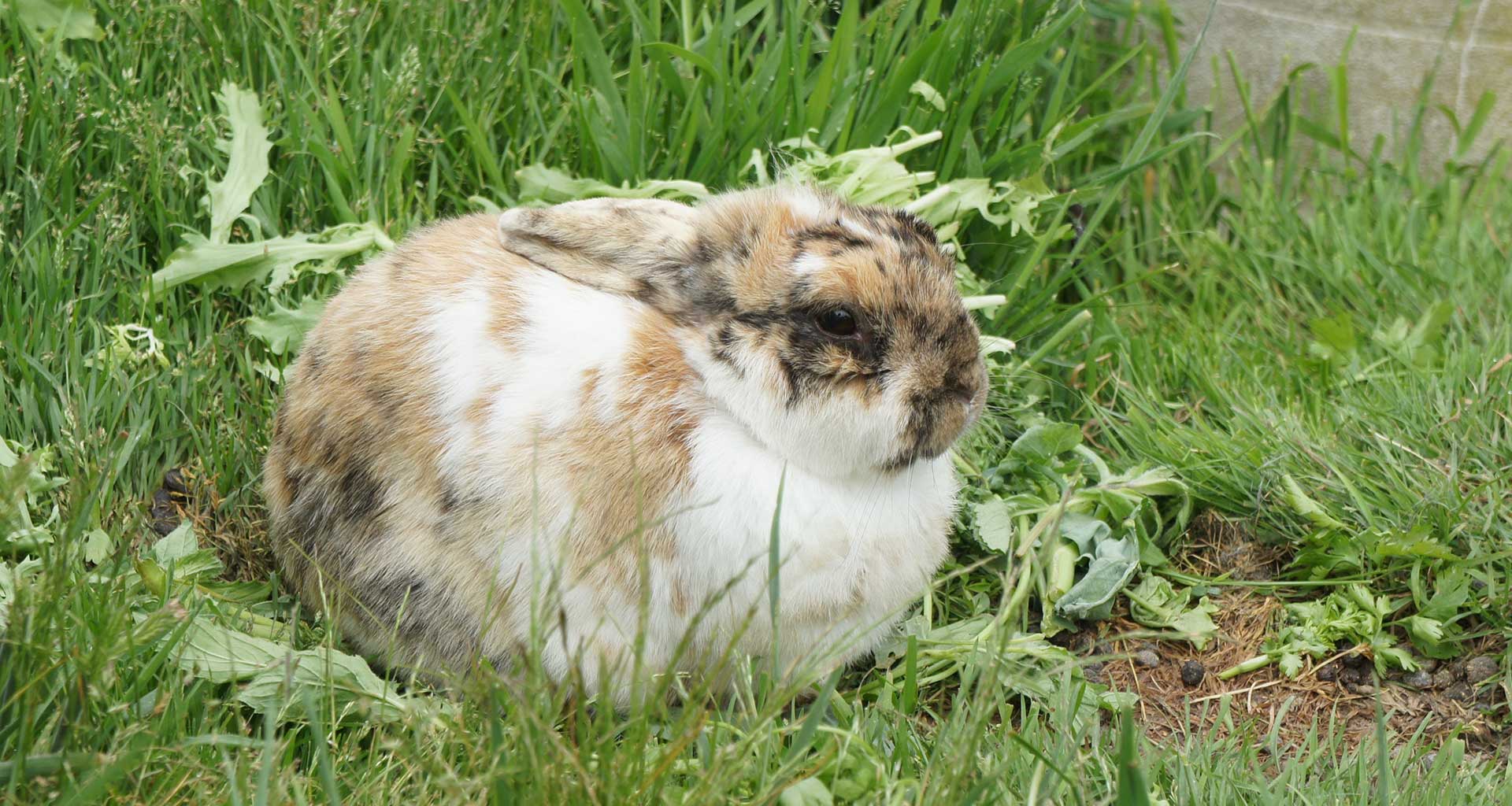
Overhead netting in rabbit enclosure collapses under weight of snow
The severe winter snow storms have torn and collapsed the entire overhead protective netting above the rabbit enclosure. Funds are desperately needed to install new and improved netting to cover the unique, one-half acre enclosure.
All the rescued rabbits are easy targets for a wide range of raptors, hawks, falcons, vultures, eagles and owls that frequent the sanctuary throughout the year some of which will be nesting increasing the vulnerability of the rabbits.
By amyduncan on September 15, 2010 at 3:44 PM
This post originally appeared on My Green Lake.
Not long ago, our neighborhood’s parks were crawling with rabbits.
The feral rabbits were descendants of cast-off pet bunnies. Hundreds of them made their home in an outcropping of rocks in Woodland Park and in a small meadow on the west side of Green Lake Park.
The bunnies first appeared in the mid-eighties. By 2005, the population had exploded.
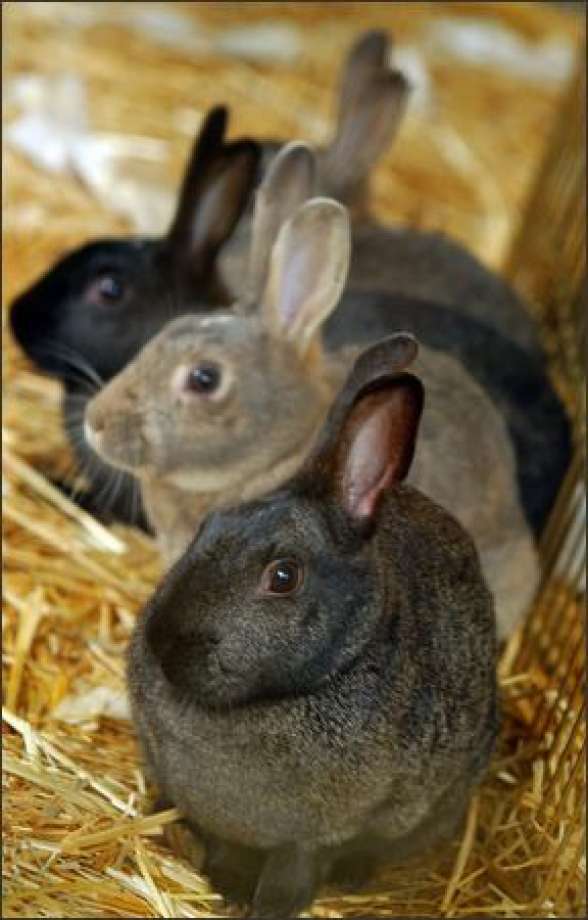
Four Woodland Park rabbits in a holding pen at Magnuson Park March 8, 2006. Grant M. Haller/Seattle Post-Intelligence
While the Green Lake rabbits were popular with many park visitors, they created a host of problems. They damaged tree roots and destroyed native wildlife habitat. Some rabbits carried parasites and diseases. They infiltrated Woodland Park Zoo, burrowing holes in the ground which were hazardous to zoo animals.
The rabbits led a hard life. Descendants of domesticated animals, they were easy prey to predators and were frequently hit by cars and chased by dogs.
In 2005, the Seattle Department of Parks and Recreation, assisted by the Progressive Animal Welfare Society (PAWS), the Seattle Animal Shelter and the Rabbit Meadow Sanctuary, created a plan to humanely remove the rabbits from Green Lake Park and Woodland Park. They hoped to trap, sterilize and move the animals to Rabbit Meadows Sanctuary in rural Redmond.
The roundup began as planned in early 2006. 48 rabbits were captured, sterilized, and sheltered in cages at Magnuson Park while they received medical care. However, part of the building where the rabbits were located was being used by the Drug Enforcement Administration for training purposes. Gun noise from the trainings scared the rabbits. A scuffle between the Parks Department and Rabbit Meadow Sanctuary led to the partnership dissolving. Many rabbits remained in the parks.
In the winter of 2006, a second attempt was made to remove the rabbits from Woodland and Green Lake Parks. This effort was successful, although the holding of the rabbits at Discovery Park led to some controversy, particularly after a dramatic KIRO investigative report uncovered poor living conditions for the rabbits.
In the the summer of 2007, the rabbits were relocated to Precious Life Animal Sanctuary, outside of Sequim. Since then, very few rabbits have been spotted in Woodland and Green Lake Parks.
Signs asking pet owners to not abandon unwanted rabbits are now posted at Green Lake Park. However, these signs are small. A local organization, Rabbit Haven, hopes to raise enough funds to purchase larger signs. You can help with this effort, as well as support their rabbit shelter, by attending the annual Rabbit Haven dinner and silent auction this Saturday (September 18, 2010), at the Rusty Pelican Cafe (1924 N 45th St).
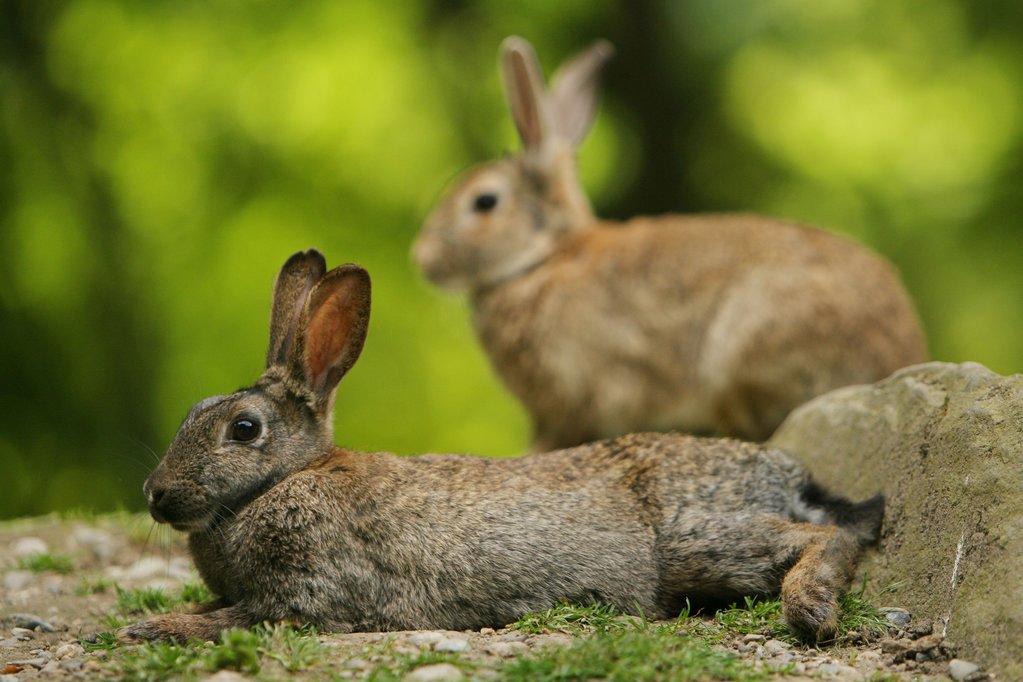
A pair of rabbits relax in Woodland Park in June 2010. — The Seattle Times
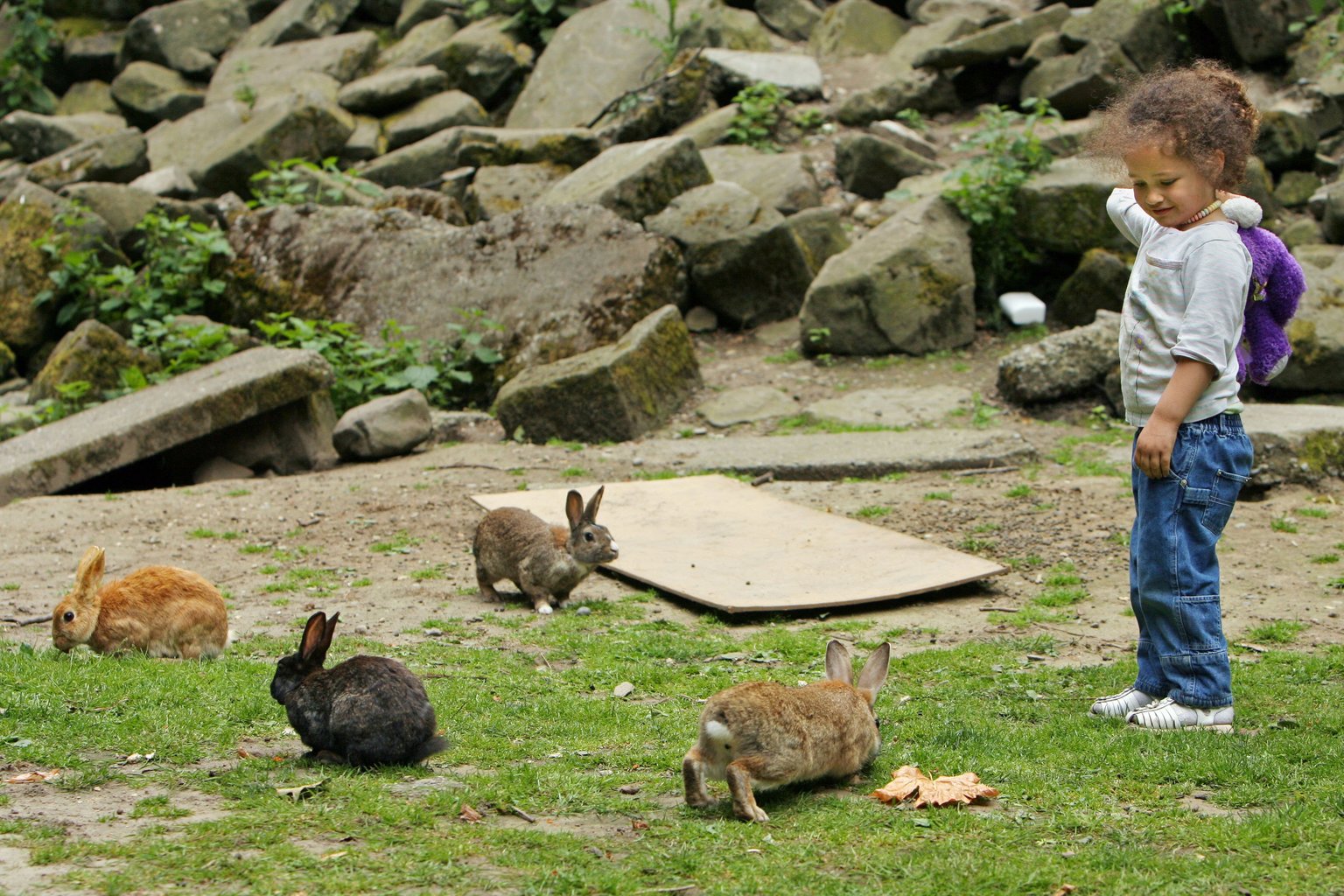
Three-year-old Olivia King watches a rabbit in the “rockery” area of Woodland Park on Monday afternoon with her father Jimmel. “We love the bunnies,” says Olivia, who has been coming to her neighborhood park to see the rabbits since she was a baby. A rabbit relocation program at Woodland and Greenlake parks shut down just a few days after it started, due to lack of funds and other factors. — The Seattle Times
Parks board invites public comment on removing Woodland Park rabbits.
— Seattle P-I, Monday, November 7, 2005.
Rabbit roundup nets lots of pregnant bunnies.
— Seattle P-I, Wednesday, March 8, 2006.
Rabbit roundup halted until later this year.
— Seattle P-I, Wednesday, March 8, 2006.
Rabbit roundup set for fall.
— The Seattle Times, Wednesday, Tuesday, June 20, 2006.
Bunnies running wild in Northwest parks.
— The Seattle Times, Originally published April 25, 2011..
“Even the smallest one can change the world.”
— Peter Rabbit
